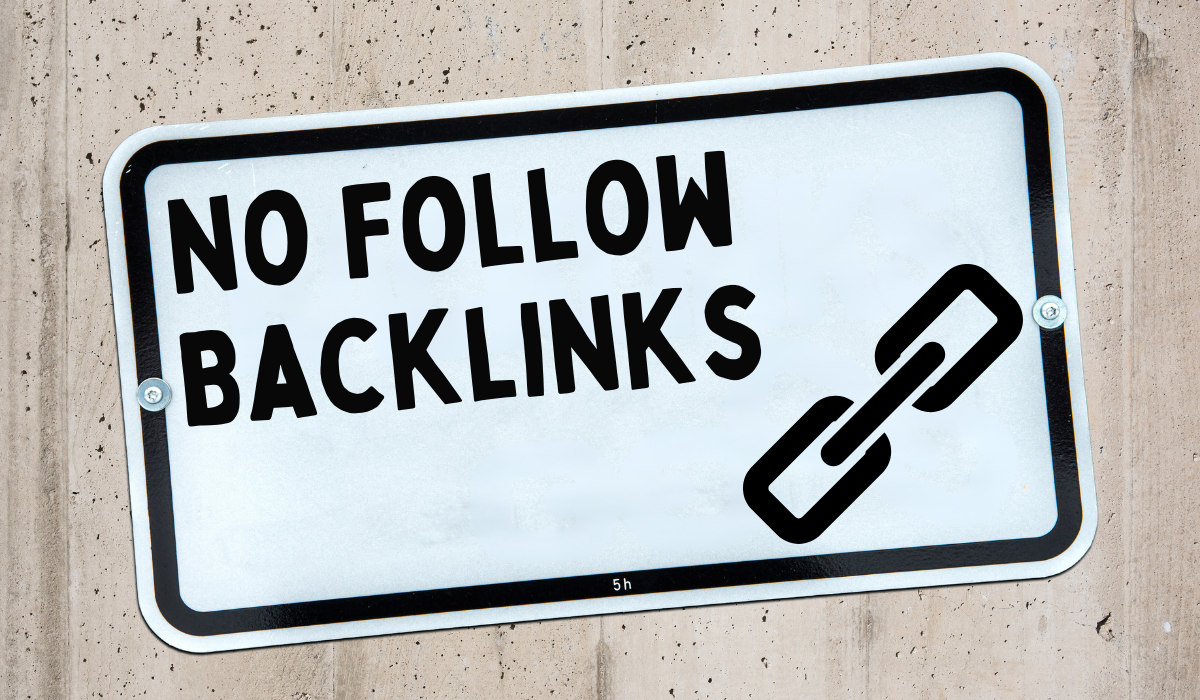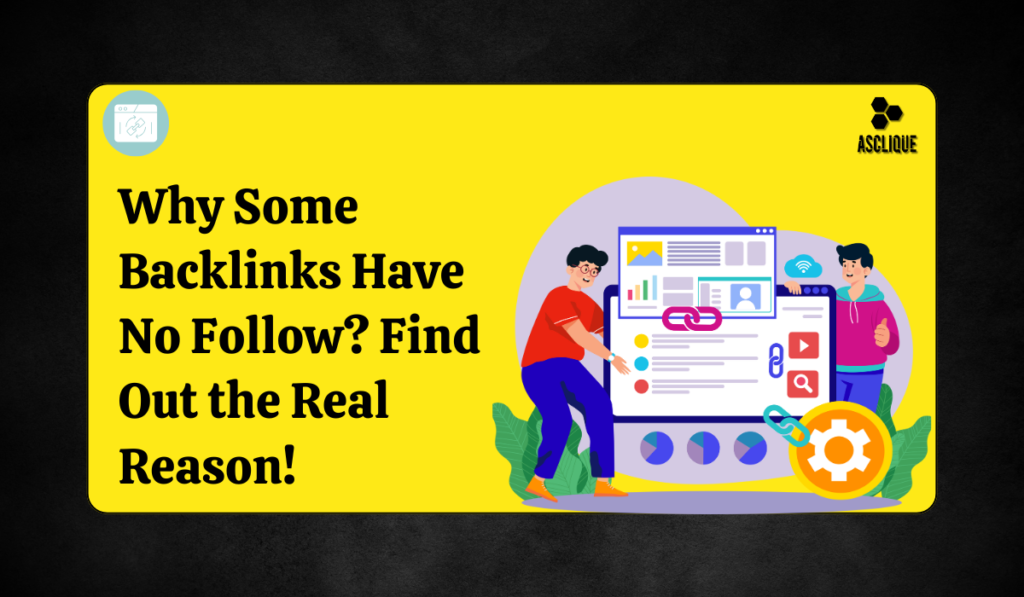Backlinks are a good way to create online authority and drive traffic. Not all backlinks are equal; some are labeled “nofollow.” Why is that? And what does it mean for your SEO efforts? Let’s break down the reason “why some backlinks have no follow”.
What Is a “Nofollow” Backlink?

To understand why some backlinks have no follow, it’s essential to first define what a “nofollow” backlink is. A backlink is a link from one site to another, regarded as a vote of confidence. However, a “nofollow” backlink is a link carrying a special HTML attribute called rel=”nofollow,” telling the search engines not to pass on any authority or “link juice” to the linked site. In essence, it tells search engines to just ignore the link for ranking purposes. So while that link may still drive the traffic, it won’t help the ranking of the site at the destination in anything like the way a “dofollow” does.
Why Do Websites Implement “Nofollow” Links?
Websites are using “nofollow” tags to links for a variety of reasons, from avoiding spammers to preserving authority. Here’s why some backlinks have “no follow”:
Preventing Spam and Unwanted Links
One of the primary purposes of using “nofollow” tags on websites is to prevent spam. Spammers love posting spam links in public spaces such as blogs, forums, and comments. When there is a “nofollow” attribute, then spammers cannot take any benefit from the links they posted in these public spaces. In fact, it was due to spammy links on blog comments that Google created the “nofollow” attribute in 2005.
Sponsored and Paid Content
The final reason is paid links, and most sites have no problem with applying the “nofollow” tag. Actually, according to Google, paying for SEO through links would bias the search rankings; thus, sites tag “nofollow” on all their links within sponsored posts, ads, and affiliate content, indicating to Google that such links are not an organic endorsement.
User-Generated or Untrusted Content
Websites use “nofollow” for user-generated content, such as forum posts and comments. Since site owners cannot verify the credibility of every user submission, the addition of “nofollow” to UGC links ensures that untrusted content does not pass authority to other sites.
Protecting Their Own Authority
High-authority websites may use “nofollow” links to prevent leaks of authority. They choose that which link they’d like to support, saving the very relevant and quality sites for “dofollow”.
How do “Nofollow” Links Affect SEO?
The debate In summary, why some backlinks have no follow about “nofollow” links continues: do these links or don’t they affect SEO? While they don’t directly pass authority, they still hold value in a comprehensive link-building strategy:
- Referral Traffic: Even without SEO benefits, “nofollow” links can bring valuable referral traffic. For example, a “nofollow” link from a popular site like Reddit or Wikipedia can still drive thousands of visitors.
- Brand Visibility and Credibility: Having your site linked on reputable platforms, even as “nofollow,” can increase brand visibility and trust. If readers see your link on a respected site, they’re more likely to view your site as credible.
- Indirect SEO Boost: Though “nofollow” links don’t pass link juice, they can still attract attention from journalists, bloggers, or other content creators who might then link to you with “dofollow” links. Over time, this can lead to a more robust backlink profile.
Types of “Nofollow” Tags: More Than Just “Nofollow”
Google expanded link attributes in 2019 to better define link relationships. Here’s a quick overview:
| Type of Nofollow Tag | Purpose | Example |
| rel=”nofollow” | General tag for links not passing SEO value or authority to the linked site. | Links in blog comments, directories, and forums. |
| rel=”sponsored” | Indicates paid or sponsored content to prevent manipulation of search rankings. | Affiliate links, paid product reviews, and sponsored posts. |
| rel=”ugc” | Marks user-generated content, helping avoid passing SEO authority to untrusted sources. | Links in forum threads, community posts, and comments. |
Here are HTML code examples for each type of “nofollow” tag:
<!– Standard “nofollow” link for general external links –>
<a href=”https://example.com” rel=”nofollow”>Visit Example</a>
<!– “Sponsored” link for paid or sponsored content –>
<a href=”https://example.com” rel=”sponsored”>Check Sponsored Content</a>
<!– “UGC” link for user-generated content –>
<a href=”https://example.com” rel=”ugc”>See User’s Post</a>
<!– Multiple tags for a sponsored user-generated link (UGC) –>
<a href=”https://example.com” rel=”nofollow ugc sponsored”>See Sponsored UGC</a>
These tags give site owners more options for identifying link relationships while helping search engines understand the nature of each link.
Real-World Examples of “Nofollow” Links in Action
Here are some common examples of sites and situations where you’ll often find “nofollow” links:
- Social Media: Most social media platforms, including Facebook, Twitter, and Instagram, automatically add “nofollow” to external links. They drive traffic but don’t influence search rankings.
- Blog Comments: Many blogs add “nofollow” to links in the comments section to prevent spam and avoid distributing authority to every commenter.
- Wikipedia: Links on Wikipedia are “nofollow,” which doesn’t prevent them from being valuable. Wikipedia links often drive high traffic and add credibility by associating your site with a trusted source.
Are “Nofollow” Links Really Worth Pursuing?
While “dofollow” links are the gold standard for building authority, “nofollow” links offer unique benefits that are often undervalued. Here’s why they’re worth considering:
- They Drive Traffic: A “nofollow” link from a popular site can drive significant referral traffic to your site, helping you reach a wider audience.
- They Build Trust and Authority: Getting linked on reputable platforms, even with a “nofollow,” still boosts your brand’s credibility. When users see your site linked on respected websites, they’re more likely to trust your content.
- They Diversify Your Link Profile: A healthy backlink profile should have a mix of “dofollow” and “nofollow” links. Relying solely on “dofollow” links can look unnatural and potentially raise red flags with search engines.
- Potential for Natural Links: Often, people who discover your site through a “nofollow” link may choose to link to your content in their own blogs or articles, creating “dofollow” links that improve your SEO.
Strategies to Make the Most of “Nofollow” Links
If you’re looking to use “nofollow” links strategically, here are some practical approaches:
- Leverage High-Traffic Platforms: Share your content on sites like Reddit, Quora, and LinkedIn, where links are often “nofollow” but can drive considerable traffic.
- Participate in Online Communities: Join discussions in relevant forums or industry blogs. Thoughtful comments or responses can build relationships with audiences who may visit your site.
- Invest in Brand Mentions: Sponsor relevant content or partner with reputable websites where your brand can be mentioned with a “nofollow” link. This increases visibility and can lead to organic mentions elsewhere.
- Submit to Directories and Resource Lists: Many directories and resource lists use “nofollow” links, but they can still be valuable for building brand visibility and potentially attracting organic links.
The Future of “Nofollow”: Is Its Role Changing?
As search engines evolve, the role of “nofollow” links has also adapted. Google, for instance, now treats “nofollow,” “sponsored,” and “ugc” attributes as “hints” rather than strict directives. This means they may still consider “nofollow” links in ranking factors under certain circumstances. So, while the primary purpose of “nofollow” remains to block authority transfer, it’s not a complete SEO dead-end.
This change reflects Google’s broader mission to evaluate links contextually. Moving forward, “nofollow” links may hold a more subtle influence in SEO strategies as search engines get smarter.
Conclusion: Why Some Backlinks Have “Nofollow”
In summary, understanding why some backlinks have no follow is crucial for effective SEO strategies.“Nofollow” links exist to improve link quality, manage spam, and maintain transparency with search engines. Even though they never pass the authority directly, links that carry the “nofollow” tag are not as irrelevant in a comprehensive approach to SEO as one would think because they help in the traffic flow, build on the credibility of the brand, and help in organic and natural links that might come out of the process. Even though quality “dofollow” links should certainly be sought, it cannot be forgotten that “nofollow” links contribute much more to your site’s presence overall and its performance.
FAQs
What is a “nofollow” link?
A “nofollow” link is a link with a tag instructing search engines not to pass authority to the linked site.
Do “nofollow” links help SEO?
Indirectly, yes. They can drive traffic, build trust, and lead to organic link opportunities.
Where are “nofollow” links common?
They’re common on social media, blog comments, and user-generated content like forums.
Can a “nofollow” link become a “dofollow” link?
Only if the website owner manually changes it.

